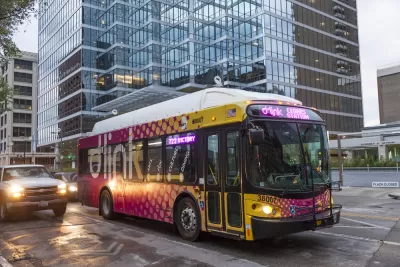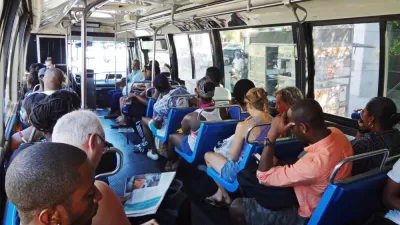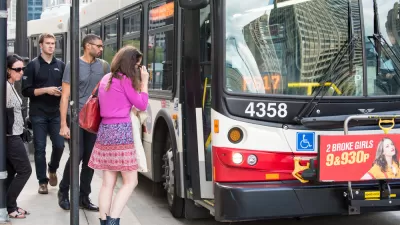While autonomous vehicles still face regulatory and technical challenges, investment in basic transportation infrastructure like buses and bike lanes can go a long way toward improving safety and taking cars off the road.

Despite rosy predictions that autonomous vehicles would rule American roads by now, writes Jacob Silverman in The New Republic, the technology still faces plenty of challenges, signaled in part by major ride-sharing companies shedding their autonomous vehicle divisions. "Across the industry, autonomous vehicle efforts have proven to be stubbornly difficult to bring to fruition, consuming billions of R&D dollars and thousands of engineering hours. Meanwhile, the infrastructure needed to support autonomous cars—government investment in roads, highways, communications, along with proper regulatory oversight—remains inadequate to the challenge." But in order to increase safety on roads, "[w]hat we need are not more energy-efficient cars or self-driving cars … but fewer cars entirely," argues SIlverman.
"In contrast to all the hype and expense of autonomous vehicles—along with the regulatory and technical and economic uncertainty—bicycles, sidewalks, and public transport work exceedingly well. They are known quantities that can be strengthened and made more accessible with a fraction of the resources that have been poured into A.V. research. They are safe and enhance the urban experience. They contribute few, if any, emissions and don’t enrich a handful of oligarchs at the expense of the common interest."
Instead of investing in "very expensive and glitzy pilot projects" that work, at most, as tourist attractions, Silverman proposes that "a better way of saving lives is to have fewer cars on the road, replaced by mass transit and other public options."
FULL STORY: Forget Tech Bro Fantasies of Self-Driving Cars and Just Invest in Buses Already

Alabama: Trump Terminates Settlements for Black Communities Harmed By Raw Sewage
Trump deemed the landmark civil rights agreement “illegal DEI and environmental justice policy.”

Study: Maui’s Plan to Convert Vacation Rentals to Long-Term Housing Could Cause Nearly $1 Billion Economic Loss
The plan would reduce visitor accommodation by 25% resulting in 1,900 jobs lost.

Planetizen Federal Action Tracker
A weekly monitor of how Trump’s orders and actions are impacting planners and planning in America.

Waymo Gets Permission to Map SF’s Market Street
If allowed to operate on the traffic-restricted street, Waymo’s autonomous taxis would have a leg up over ride-hailing competitors — and counter the city’s efforts to grow bike and pedestrian on the thoroughfare.

Parklet Symposium Highlights the Success of Shared Spaces
Parklets got a boost during the Covid-19 pandemic, when the concept was translated to outdoor dining programs that offered restaurants a lifeline during the shutdown.

Federal Homelessness Agency Places Entire Staff on Leave
The U.S. Interagency Council on Homelessness is the only federal agency dedicated to preventing and ending homelessness.
Urban Design for Planners 1: Software Tools
This six-course series explores essential urban design concepts using open source software and equips planners with the tools they need to participate fully in the urban design process.
Planning for Universal Design
Learn the tools for implementing Universal Design in planning regulations.
Caltrans
Smith Gee Studio
Institute for Housing and Urban Development Studies (IHS)
City of Grandview
Harvard GSD Executive Education
Toledo-Lucas County Plan Commissions
Salt Lake City
NYU Wagner Graduate School of Public Service





























